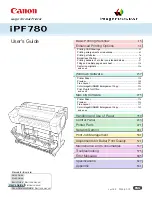
Advanced Functions and Settings: AXIS ALIGNMENT - Axis Alignment Parameter Setting
84
then the distortion of the printed image can be taken into account. The origin
point can be set independently.
• 4 POINTS: This method should be used if the printed media has four registration
marks. If the relative position of each of the four marks is already known then
the distortion of the printed image can be taken into account. The origin point
can be set independently.
Selecting the
Axis Alignment
Method
T
WO
-P
OINT
M
ETHOD
The two-point method requires you to enter “AXIS POINT 1”, “AXIS POINT 2”
and the “AXIS ORIGIN POINT” which are shown at the bottom. The origin point
may be located at the same position as that of point one. The virtual angle of the X
Axis and the position of the origin point can be adjusted individually.
T
HREE
-P
OINT
M
ETHOD
The three-point method requires you to enter “AXIS POINT 1”, “AXIS POINT 2”,
“AXIS POINT 3” and the “AXIS ORIGIN POINT” which are shown at the bottom.
The origin point may be located at the same position as that of point one. You may
adjust the virtual angle of both X and Y axes and the position of the origin point
individually, as with the 2-point method, and you may match the plotter’s distance
scale to that of the printed image.
F
OUR
-P
OINT
M
ETHOD
The four-point method requires you to enter "AXIS POINT 1", "AXIS POINT 2",
"AXIS POINT 3", "AXIS POINT 4", and the "AXIS ORIGIN POINT". The origin point
may be located at the same position as that of point one. You may adjust the vir-
tual angle of both X and Y axes and the position of the origin point individually, as
with the 2-point and 3-point methods, and you may match the plotter's distance
scale to that of the printed image.
To match the plotter’s distance scale to that of the printed image, the distance
between points 1 and 2, points 1 and 3, and points 1 and 4 must be known. This
function helps when the dimensions of the printed image change during printing,
laminating or storage.
• AXIS POINT 1: Registration mark. In both the two and three-point methods,
this point is commonly used as the reference for X and/or Y axis alignment.
• AXIS POINT 2: Registration mark or any point on the line which goes
through AXIS POINT 1 and along the X axis of the pre-printed image.
• AXIS POINT 3: Registration mark or any point on the line which goes
through AXIS POINT 1 and along the Y axis of the pre-printed image. This
is only available when the three-point method is selected.
• AXIS POINT 4: Registration mark diagonally opposite registration mark 1 or
any point on the line which goes through AXIS POINT 2. This is only avail-
able when the four-point method is selected.
Содержание FC5100A-100
Страница 1: ...A 75 100 130 150 user manual MANUAL NO FC5100 UM 154...
Страница 3: ......
Страница 10: ...FC5100A Loupe PHP 61 Loupe 197 Attaching the Loupe 197 Using the Loupe 198 Chapter 11 Appendix 200...
Страница 11: ......
Страница 27: ...Out of the Box Connecting the Plotter 27...
Страница 33: ...Cutters and Holders Blade Length 33...
Страница 133: ...Advanced Functions and Settings RS 232C Serial Interface 133...
Страница 149: ...Background Settings Background Settings for HP GL 149...
Страница 199: ...Options FC5100A Loupe PHP 61 Loupe 199...













































